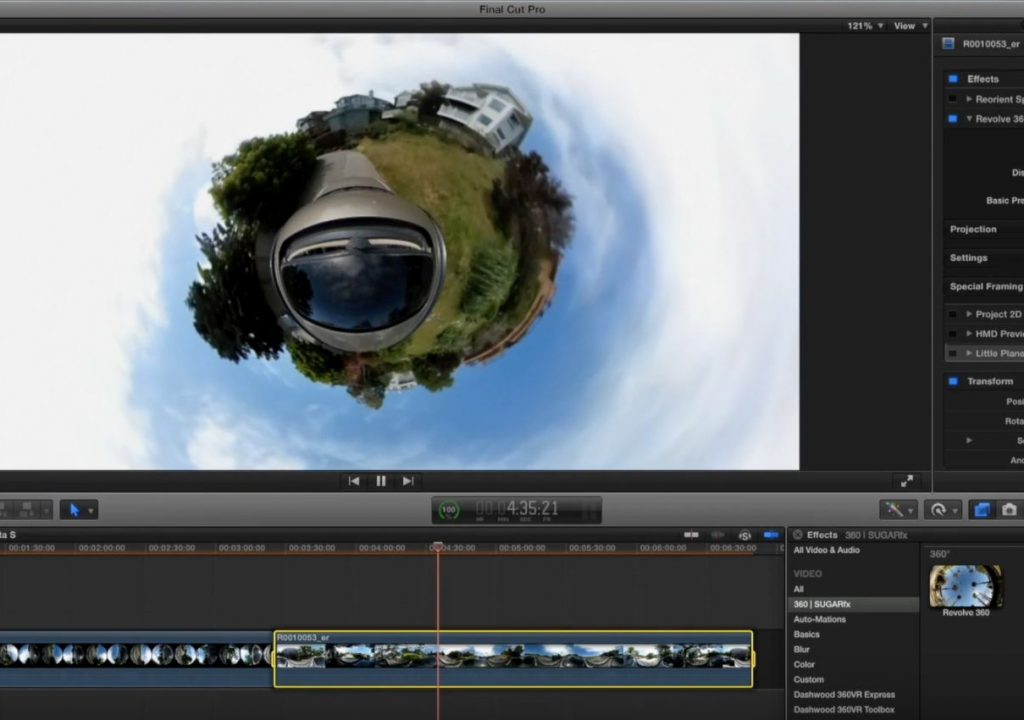https://www.youtube.com/watch?v=SLuQqa-2l8I
This week on MacBreak Studio, we move to Part 2 of our exploration into working with 360VR footage in Final Cut Pro X. If you missed Part 1, be sure to check it out here.
As opposed to creating 360VR content to be viewed in an HMD (head-mounted display) like an Oculus Rift or HTC Vive, or even Google Cardboard or Mattel’s View-Master VR, today we tackle the subject of using 360VR footage to deliver video to be viewed in a traditional “fixed flat screen” format.
To convert the equirectangular format of 360VR footage into something viewable in a flat environment (well, it’s already viewable as is, but pretty disorienting), we turn to a couple of plugins for Final Cut Pro X. The first is Revolve 360 from SUGARfx. This plugin creates the popular “tiny world” effect, and includes a long list of presets to choose from, as well as parameters for customizing the look further. By keeping the entire 360 capture inside the frame, decent resolution is maintained, and where the image is stretched the most is often area of sky with very little detail to worry about. It’s a very cool look but is very stylized so need to be used sparingly with attention to specific applications.
The second approach is to produce what looks like 360VR video that you might drag to change your view when watching online, but instead it is a traditional video where the editor decides on the point of view, rather than the viewer, by animating it with keyframes inside of Final Cut Pro X. To accomplish this, we use Tim Dashwood’s 360VR Express Toolkit, specifically the HMD Preview Express plugin.
While taking away control from the viewer, it allows the director/editor to decide exactly what they want the viewer to see at any point in time. This concept is analogous to shooting 4K and delivering HD, where you have lots of extra resolution for reframing the shot or animating a move inside the shot – but instead of 4 times the size HD frame, you have the entire 360 world available to choose from!
The downside is that resolution can really suffer, since at any point in time you are looking about about 1/6th of a 1920×960 frame (based on footage captured from a Ricoh Theta S). But there are inexpensive 4K 360VR cameras available, and the technology keeps improving. So the question in the future may not just be “should I shoot HD or 4K”, but rather, “should I shoot 360” as well.
If you want to learn more about using Final Cut Pro X, we have you covered.


